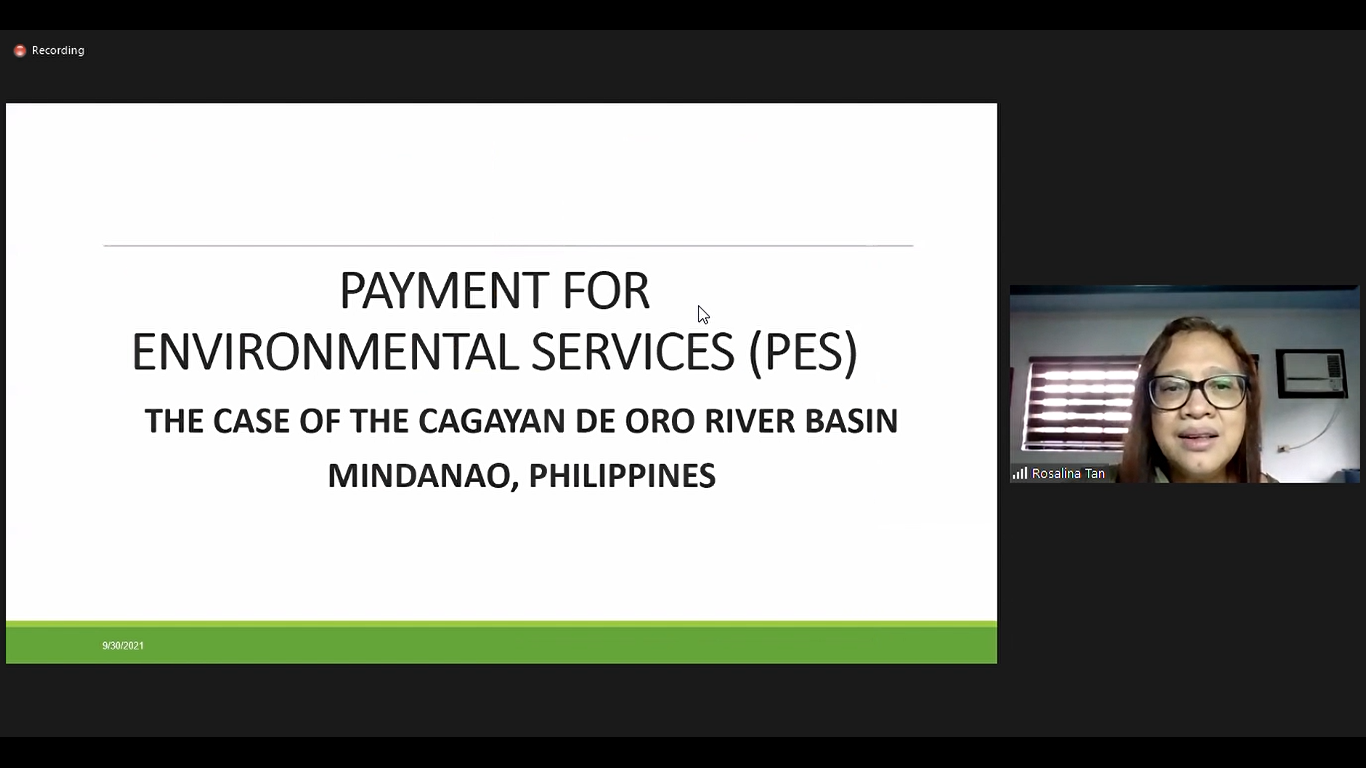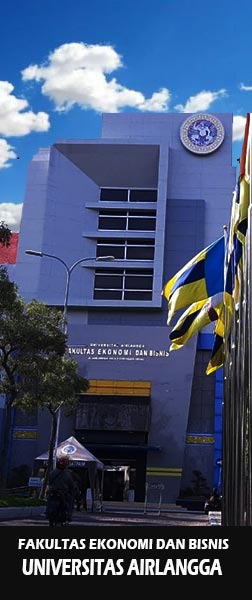Thursday, September 30, the Department of Economics, Faculty of Economics and Business, Universitas Airlangga held a guest lecture on the topic "Watershed Conservation" by title "Payment for Environmental Services: Willingness to Pay for Watershed Preservation". The guest lecture is part of a series Guest Lecture Series in the program Inbound Staff Department of Economics FEB UNAIR by presenting a speaker who is a Professor from Department of Economics, Ateneo de Manila University namely Rosalina Palanca-Tan, PhD. The presenter presented his research in a way online via Zoom Meeting with the research title "Payment for Environmental Services (PES) The Case of The Cagayan De Oro River Basin Mindanao, Philippines".

Material presentation session by Dr. Rosalina Palanca-Tan, PhD, at a Guest Lecture at the Department of Economics, FEB UNAIR
on September 30, 2021. (Photo: SS Zoom).
In the presentation session, Prof. Roalina Palanca-Tan also emphasized that, "Most of the participants have familiar with terms payments for environmental services (PES), which is a scheme to generate financial resources to fund and reward initiatives to restore and conserve ecosystems".
In addition, the object of the research is to estimate economic value derived from all the benefits that can be derived from a sustainable aquatic environment. Specifically, the research location according to these conditions is in the Cagayan de Oro River Basin.
"This research focuses on stakeholder groups certain groups of households living around the Cagayan river, more precisely in Cagayan de Oro City," said Prof. Rosalina.
Further explanation regarding the importance of calculating estimated profits was also explained by Prof. Rosalina. The reason is because the estimate will be basis for the amount of funds that can be paid in the PES scheme. In real terms, it can be seen from the lives of residents around the downstream of the river who benefit from existing natural resources such as food supply (fish), flood control, stable supply of clean water, recreational activities (rafting and others), fresh air. due to carbon sequestration by forests, as well as biodiversity.
There is a technique in this study that uses statements or opinions of individual respondents regarding their choice of something set choice. This technique is Contingent Valuation Method (CVM) used to calculate the estimated profit.
Prof. Rosalina explained that, "CVM is an assessment technique non-market. In economics, if we want to know the benefits derived from goods or services, then we have to look at the market. Because, in the market every item has a market price. For that, an assessment method is needed non-market to measure the profit."
By asking directly Willingness to Pay respondents, can be classified various types of benefits obtained as use values and non-use values, explained Prof. Rosalina. This can make it easier to calculate the estimated benefits that residents get from the surrounding ecosystem so that the amount of funds that should be given to keep the environment beautiful can be determined.


